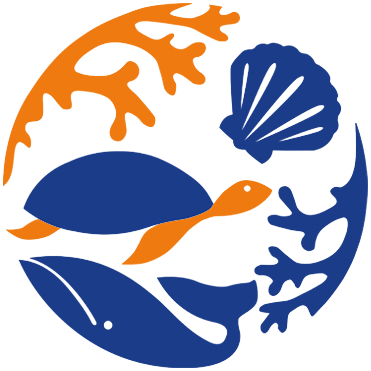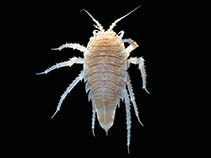Glyptonotus antarcticus Eights, 1853
| Native range | All suitable habitat | Point map | Year 2050 |

|
| This map was computer-generated and has not yet been reviewed. |
| Glyptonotus antarcticus AquaMaps Data sources: GBIF OBIS |
Classification / Names आम नाम | उपशब्द | CoL | ITIS | WoRMS
Malacostraca | Isopoda | Chaetiliidae
Environment: milieu / climate zone / गहराई सीमा / distribution range पारिस्थितिकी
; गहराई सीमा 0 - 580 m (संदर्भ 3113). Polar
Distribution देश | ऐफ ऐ ओ क्षेत्र | Ecosystems | संयोग | भूमिका
Northeast Atlantic and the Antarctic.
Length at first maturity / आकार / Weight / Age
परिपक्व अवधि: Lm ? range ? - ? cm Max length : 9.0 cm TL पुल्लिंग / अलिंग; (संदर्भ 8360)
Life cycle and mating behavior परिपक्व अवधि | पुनरुत्पत्ति | मछलीऔ का अंडे देना | Eggs | Fecundity | Larvae
Main reference
संदर्भ | संयोजक | सहयोगीयो
Held, C. and J.-W. Wägele 2005 Cryptic speciation in the giant Antarctic isopod Glyptonotus antarcticus (Isopoda: Valvifera: Chaeteliidae). Scientia Marina 69 (Suppl. 2):175-181. (संदर्भ 8360)
IUCN Red List Status
(संदर्भ 130435: Version 2025-1)
CITES status (संदर्भ 108899)
CMS (संदर्भ 116361)
Threat to humans
Human uses
| FishSource |
साधन
अधिक जानकारी
Max. ages / sizes
Length-weight rel.
Length-length rel.
Length-frequencies
Mass conversion
बहुतायत
इंटरनेट स्रोत
BHL | BOLD Systems | CISTI | DiscoverLife | FAO(Publication : search) | Fishipedia | GenBank (genome, nucleotide) | GloBI | Gomexsi | Google Books | Google Scholar | Google | PubMed | Tree of Life | Wikipedia (Go, खोज) | Zoological Record



